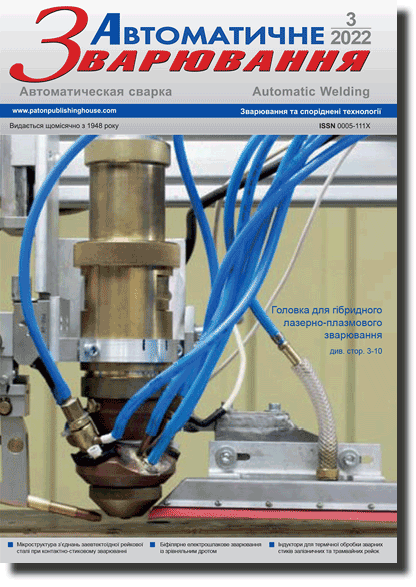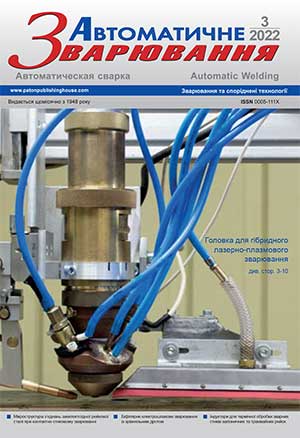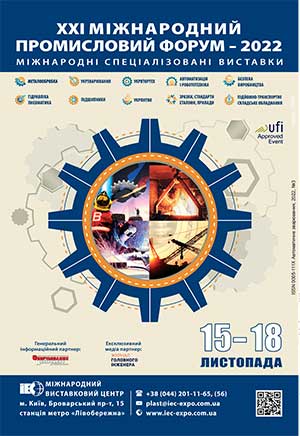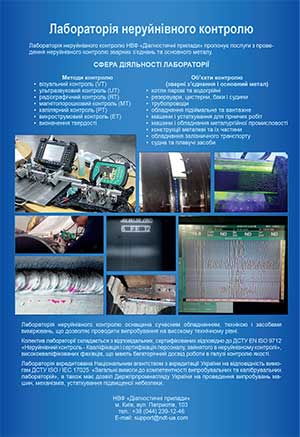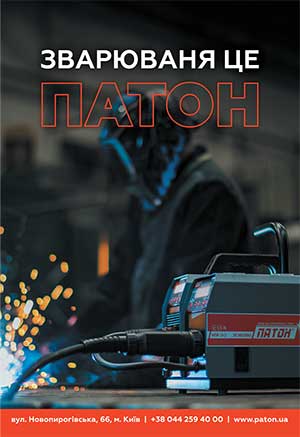| 2022 №03 (01) |
DOI of Article 10.37434/as2022.03.02 |
2022 №03 (03) |
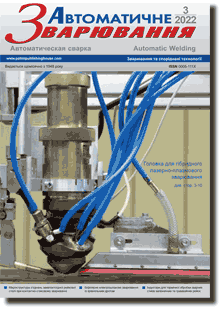
"Avtomatychne Zvaryuvannya" (Automatic Welding), #1, 2022, pp. 19-25
Influence of welding modes on decarburization in the haz of R91 steel in welded joints of dissimilar steels after high-temperature tempering
M.O. Nimko, V.Yu. Skulskii, A.R. Gavrik, I.G. Osipenko, T.V. Ivanenko
E.O. Paton Electric Welding Institute of the NAS of Ukraine. 11 Kazymyr Malevych Str., 03150, Kyiv, Ukraine. E-mail: office@paton.kiev.ua
Carbon migration from the lower-alloyed to the higher-alloyed steel takes place in welded joints of dissimilar steels, as a result of the difference in carbon chemical potential after tempering and in high-temperature service. Decarburization in the HAZ near-weld zone of the lower-alloyed steel can lead to formation of service defects and subsequent failure. From mass transfer theory it is known that in polycrystalline bodies the diffusion of interstitial elements, in particular carbon, occurs most rapidly along the grain boundaries. Theoretically, reduction of carbon diffusion can be achieved by increasing the grain dimensions in the HAZ near-weld zone that will lead to reduction of the overall grain boundary area per a unit of volume in this zone. This work is a study of the influence of the angle of electrode inclination and welding current at deposition of austenitic metal on R91 steel on the width of the decarburized layer, forming at subsequent tempering at the temperature of 700 and 760 C. It is shown that the resultant decarburized layer becomes narrower with increase of the angle of electrode inclination and deposition current. 18 Ref., 10 Fig.
Ключові слова: carbon diffusion, dissimilar steel joint, HAZ, decarburized interlayer, grain boundaries
Received: 17.01.2022
References
1. Lundin, C.D., Khan, K.K., Yang, D. (1995) Effect of carbon migration in Cr-Mo weldments on metallurgical structure and mechanical properties. Welding Research Council Bulletin, 407, 1-49.2. DuPont, J.N. (2012) Microstructural evolution and high temperature failure of ferritic to austenitic dissimilar welds. International Materials Reviews, 57(4), 208-234. https://doi.org/10.1179/1743280412Y.0000000006
3. Dawson, K.E., Tatlock, G.J., Chi, K., Barnard, P. (2013) Changes in precipitate distributions and the microstructural evolution of P24/P91 dissimilar metal welds during PWHT. Metallurgical And Materials Transactions A, 44, 5065-5080. https://doi.org/10.1007/s11661-013-1880-y
4. Abe, F., Kern, T.-U., Viswanathan, R. (2008) Creep-resistant steels. Woodhead Publishing. https://doi.org/10.1533/9781845694012
5. Helander, T., Andersson, H.C.M., Oskarsson, M. (2000) Structural changes in 12-2.25% Cr weldments - an experimental and theoretical approach. Materials at High Temperatures, 17(3), 389-396. https://doi.org/10.1179/mht.2000.17.3.003
6. Brett, S.J. (2004) Type IIIa cracking in 1/2CrMoV steam pipework systems. Science and Technology of Welding and Joining, 9(1), 41-45. https://doi.org/10.1179/136217104225017134
7. Frei, J., Alexandrov, B.T., Rethmeier, M. (2019) Low heat input gas metal arc welding for dissimilar metal weld overlays part III: hydrogen-assisted cracking susceptibility. Welding in the World, 63, 591-598. https://doi.org/10.1007/s40194-018-0674-7
8. You, Y., Shiue, R.K., Shiue, R.H., Chen, C. (2001) The study of carbon migration in dissimilar welding of the modified 9Cr-1Mo steel. Journal of Materials Science Letters, 20, 1429-1432. https://doi.org/10.1023/A:1011616232396
9. Karthick, K., Malarvizhi, S., Balasubramanian, V., Gourav Rao, A. (2018) Tensile properties variation across the dissimilar metal weld joint between modified 9Cr-1Mo ferritic steel and 316LN stainless steel at RT and 550 °C. Metallography, Microstructure and Analysis, 7, 209-221. https://doi.org/10.1007/s13632-018-0430-9
10. Urzynicok, M., Jachym, R., Kwiecinski, K. et al. (2013) Application of EPRI87 in dissimilar welding austeniticmartensitic welded joints of TEMPALOY AA-1 and T92 steel grades. Advances in Materials Technology for Fossil Fuel Power Plants: Proceedings of the 7th International Conference, Waikoloa, Hawaii, USA, 992-1005.
11. Coleman, K., Gandy, D. (2007) Alternative filler materials for DMWs involving P91 materials. Advances in Materials Technology for Fossil Power Plants: Proceedings of the 5th International Conference, Marco Island, Florida, USA, 940-967.
12. Nimko, M.O. (2021) Influence of welding parameters on decarburization in heat affected zone of dissimilar weldments after post weld heat treatment. Archives of Materials Science and Engineering, 112(1), 23-31. https://doi.org/10.5604/01.3001.0015.5929
13. Defects/imperfections in welds - reheat cracking. Job knowledge for welders, 48, TWI, July 2000, 4 p. (www.twiglobal. com/technical-knowledge/job-knowledge/defectsimperfections-in-welds-reheat-cracking-048).
14. Tamura, M., Abe, F., Shiba, K. et al. (2013) Larson-Miller constant of heat-resistant steel. Metallurgical and Materials Transactions A, 44(6), 2645-2661. https://doi.org/10.1007/s11661-013-1631-0
15. Lakhtin Yu.M. (1984) Metals science and heat treatment. Moscow, Metallurgiya [in Russian].
16. https://imagej.nih.gov/ij/
17. Mehrer, H. (2007) Diffusion in Solids. Fundamentals, Methods, Materials, Diffusion-Controlled Processes. Springer-Verlag. https://doi.org/10.1007/978-3-540-71488-0
18. Belova, I.V., Murch, G.E. (2001) The transition from Harrison type-B to type-A kinetics in grain-boundary tracer diffusion. Philosophical Magazine A, 81(10), 2447-2455. https://doi.org/10.1080/01418610108217157
Advertising in this issue:
The cost of subscription/purchase order journals or individual articles
| Journal/Currency | Annual Set | 1 issue printed |
1 issue |
one article |
| TPWJ/USD | 384 $ | 32 $ | 26 $ | 13 $ |
| TPWJ/EUR | 348 € | 29 € | 24 € | 12 € |
| TPWJ/UAH | 7200 UAH | 600 UAH | 600 UAH | 280 UAH |
| AS/UAH | 1800 UAH | 300 UAH | 300 UAH | 150 UAH |
| AS/USD | 192 $ | 32 $ | 26 $ | 13 $ |
| AS/EUR | 180 € | 30 € | 25 € | 12 € |
| SEM/UAH | 1200 UAH | 300 UAH | 300 UAH | 150 UAH |
| SEM/USD | 128 $ | 32 $ | 26 $ | 13 $ |
| SEM/EUR | 120 € | 30 € | 25 € | 12 € |
| TDNK/UAH | 1200 UAH | 300 UAH | 300 UAH | 150 UAH |
| TDNK/USD | 128 $ | 32 $ | 26 $ | 13 $ |
| TDNK/EUR | 120 € | 30 € | 25 € | 15 € |
AS = «Automatic Welding» - 6 issues per year;
TPWJ = «PATON WELDING JOURNAL» - 12 issues per year;
SEM = «Electrometallurgy Today» - 4 issues per year;
TDNK = «Technical Diagnostics and Non-Destructive Testing» - 4 issues per year.





